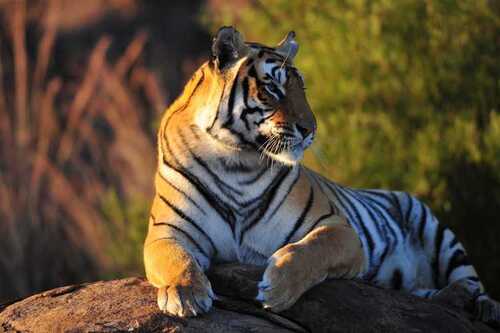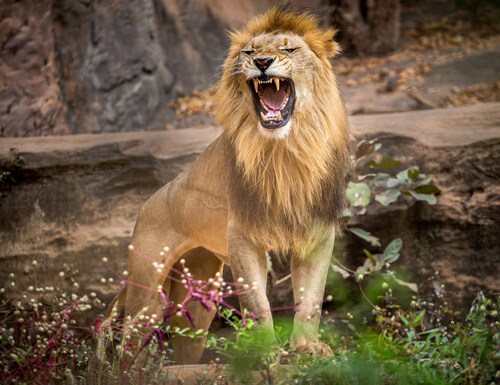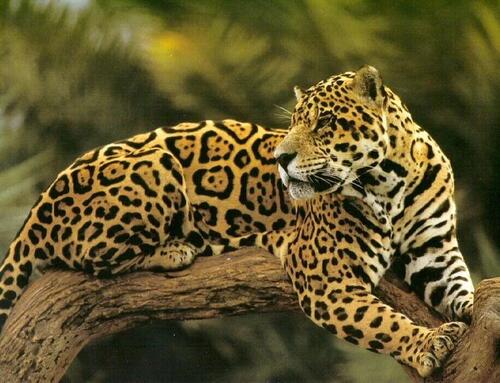In nature, the term "king of the jungle" is often used to describe predators at the top of the food chain. The king of the jungle is the most dominant creature in a rich and diverse jungle environment that is home to a variety of animals, plants, and microorganisms. The title is usually given to large cats, especially tigers and lions, but in certain areas, it may also refer to other top predators such as jaguars, leopards, and even large apes in certain environments.
The tiger is a world-renowned king of the jungle, especially in the tropical rainforests and temperate forests of Asia. As the largest cat on land, tigers have powerful hunting skills and unparalleled strength. They can quickly knock out prey larger than their own weight through ambushes and can sprint at speeds of 60 kilometers per hour.
Tigers live mainly in forests and grasslands in Asia, including India, China, and the Russian Far East. Their habitats are usually surrounded by dense trees and abundant prey, which allows them to better hide and ambush prey.
Tigers are solitary animals with a strong sense of territory. They mark their territory with urine, scratches and calls to avoid conflicts with other tigers. Tigers are nocturnal animals and usually hunt at night. Their prey includes deer, wild boars, and even occasionally small Elephants-Are-Endangered.html">elephants.

Although lions live more in grasslands than jungles, they are also regarded as the overlords of the jungle in some African forests. Male lions are famous for their majestic manes and roars, symbolizing strength and authority.
The savannah in Africa is the main habitat of lions, but some subtropical and tropical jungles are also home to lions. Unlike tigers, lions live in groups, usually in family units, hunting and defending territory together.
Lions prey on large herbivores such as wildebeests, zebras and antelopes. Lion groups usually consist of several female lions responsible for hunting, while male lions are responsible for protecting the family from outside enemies.

The jaguar is the king of the jungle in the American rainforests. Their size and strength make them the top predator in the food chain of South America, especially in the Amazon rainforest.
Jaguars live in tropical rainforests, wetlands and savannas in Central and South America. They are good at moving in dense forests and using the cover of the surrounding environment to ambush prey.
Jaguars have extremely strong teeth and bite force, which can easily penetrate the skull of their prey. They not only prey on land animals, but also are good at hunting in water, such as crocodiles and turtles. Jaguars like to live alone and move secretly.

The king of the jungle is not only the top predator in the food chain, but also plays a vital role in maintaining ecological balance. By preying on herbivores, the king of the jungle can prevent the over-reproduction of certain species and avoid the destruction of vegetation. At the same time, their existence also indirectly helps the survival of other small and medium-sized animals, because the excessive growth of herbivores will lead to a lack of vegetation and affect the health of the entire ecosystem.
Although these top predators are called the king of the jungle, they face many threats to their survival. The main reasons include:
Habitat loss: Deforestation and land development have severely reduced the living space of the king of the jungle, forcing them into human settlements, leading to increased conflicts between humans and animals.
Poaching: Rare animal products such as tiger skins and bones are extremely expensive in the illegal market, resulting in repeated poaching, especially for rare species such as tigers and lions.
Food chain imbalance: Human hunting and overfishing of other species have affected the number of prey for the king of the jungle, threatening their survival.
To protect these great predators, governments and non-governmental organizations have taken a number of measures:
Establishing nature reserves: By creating and expanding wildlife reserves, we can ensure that the king of the jungle has sufficient habitat and prey.
Fighting poaching: By strengthening law enforcement and raising public awareness, we can reduce illegal hunting and the trade of wildlife products.
Ecotourism: Sustainable ecotourism can not only increase people's understanding of the king of the jungle, but also provide economic support to local communities and reduce their dependence on forest resources.
The king of the jungle is not only a symbol of nature, but also an important maintainer of the balance of the ecosystem. Protecting these top predators is not only about maintaining biodiversity, but also about ensuring that our planet remains ecologically balanced. Therefore, everyone should do their part to protect the king of the jungle, whether by supporting relevant conservation organizations or reducing the demand for wildlife products.
animal tags: Tiger Lion Jaguar
We created this article in conjunction with AI technology, then made sure it was fact-checked and edited by a Animals Top editor.